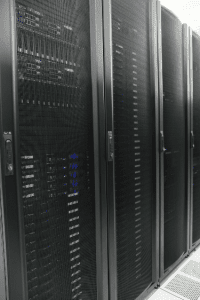Part One: Plan for A Fire Drill
Responding to trouble tickets manually submitted by our customers is one of the most prevalent and essential tasks that we perform on a daily basis at ServerCentral. Sometimes I take how long I’ve been sending and replying to trouble tickets for granted. It’s almost automatic.
That got me thinking…what makes a good trouble ticket?
In this three-part blog bonanza, I’ll detail some major components of trouble tickets to ensure they’re responded to in the most expeditious and accurate manner possible. My first entry, “Plan for A Fire Drill,” covers oft-overlooked housekeeping exercises that could potentially save you costly downtime and frustration later on.
Here are my top five, can’t-miss tips to ensure your turf is ready for a fire drill:
1. Labels Are Cheap; Downtime Is Expensive
Many customers label the front of their gear, but not everyone knows to label the back. It’s important to label both sides so that Remote Hands technicians are able to service your equipment faster.
99% of the time, a technician begins triage at the business end of the rack—the rear.
If there are no labels in back, she’ll have to walk around to the front to identify which rack unit (RU) the specific machine occupies. This commute can be long, as modern data center rows often approach 100 feet. She’ll then have to walk back around (another ~100 feet) to locate the appropriate RU and machine.
By labeling both the front and back of your gear, you can save several minutes of gruesome downtime while abating the chance of miscounting RUs or troubleshooting the wrong machine.
plz reboot the one with the blue light, lol
2. Don’t Just Create An Install Base, Maintain It
An install base is a spreadsheet that details the location, identity, and connectivity of all gear in a rack.
Creating the document is easy, but updating it every time you make a change is not.
I suggest saving this document somewhere in a shared folder where all of your operations personnel can easily access it. Audit against your install base annually to keep your team honest. The format of the of it is irrelevant, so long as the data are complete, accurate, and easily understood. Here’s an example Single Cabinet Install Base Example Template that you can modify for your own environment.
3. A Picture Is Worth A Thousand Reboots
Install bases and Visios are great tools for keeping track of your environment, but sometimes you just want to reference a picture.
If you send your Remote Hands vendor 30 nodes to rack and cable, ask them to take pictures when they’re done.
That way you can make sure your rack and cabling standards are upheld and have an image to reference for your infrastructure scrapbook.
4. Keep Your Cabling Neat And Tidy
Messy, undocumented cabling poses significant challenges to any technician (including you!) working in a cabinet.
You’ve heard the horror stories—waterfalls of spaghetti cable monsters pouring out of cabinets eventually coming to life and terrorizing the village. They all begin the same way: someone runs one, singular cable in a haphazard fashion, and without fail, the temptation to lax standards on the next one becomes too great—and so born is the beast.
Clean cabling allows technicians to work with confidence, among other benefits covered in Chris’s post, Clean Up After Your Cables.
5. Say “Hi” Once In A While
I can’t speak for other data center operations teams, but at ServerCentral we relish the opportunity to get to know the folks we support. Getting to know the team that’s responsible for maintaining your physical environment puts a face to a name, engendering a sense of familiarity and responsibility.
In Part Two of this series, I’ll write about communicating effectively to optimize trouble ticket resolution.

